#Ambulocetus natans
Note
spare ambulocetus content for the poor 🤲
Of course!
Here's neat museum display of the animal: The Ambulocetus holotype posed both in the same arrangement the fossil was originally discovered in, and in an in-life swimming position! At the Naturmuseum Senckenberg in Frankfurt, Germany.

[ photo source ]
#ask#anonymous#Ambulocetus#Ambulocetus natans#Eocene#Skeleton#Prehistoric#Mammal#Naturmuseum Senckenberg
71 notes
·
View notes
Text

my little ghostly walking whale
they are silly
design is originally by https://scratch.mit.edu/users/CapitanFluffy/
I won from a draw to adopt contest
those things are the bane of my existence and still I choose to fight in those trenches
#oc: baikal#art#artists of tumblr#oc#oc art#reference sheet#furry#anthro furry#paleoart#ambulocetus#ambulocetus natans#pelagos
3 notes
·
View notes
Text

Ambulocetus natans
#paleoart#paleontology#not a reptile#mammal#synapsid#stem whale#early whale#ambulocetus#natans#ambulocetus natans#art#July 15th 2021
112 notes
·
View notes
Text

Finally continuing my simplistic synapsid series and starting on mammals. School is intense right now and I’m trying to nail down a schedule that allows me to get everything done yet still have some free time. So yeah I’ll still be working on these, but won’t be able to come up with new ones as often as I was before.
Anyway, with that out of the way, here is Ambulocetus natans!
Ambulocetus was one of the first cetaceans (whales) to take to the water, living a semi-aquatic lifestyle similar to otters or crocodiles. These sea lion-sized ungulates lived in modern day India, which used to be a tropical island before colliding with the rest of Asia. They lived in coastal brackish mangrove swamps alongside sharks, turtles, crocodiles, and other early cetaceans like Pakicetus.
28 notes
·
View notes
Text
i think my favorite prehistoric animal, by far, is Ambulocetus natans, and i’m always pleased when i see them crop up in paleoart and documentaries
22 notes
·
View notes
Text




#Oc femenina#oc#Ambulocetus Natans#Nathalia Amber#Jojos reference#Murenase Shitton gakuen#Murenase Seton gakuen
0 notes
Text
Ok, so I’m looking for therians + other groups
I’m looking for therians or at least a pack that’s in Florida. I’m really lonely and i live in a country ass town that makes fun of me for wearing gear and no one understands the concept or has heard the words otherkin or therian. My age range is 13-18. I’m a paleotherian, and I identify with Florida Black Wolves, Ambulocetus Natans, and Andrewsarchus.
!!EVEN IF YOUR NOT A THERIAN, I WOULD ALSO LIKE PEOPLE WHO LIKE ANIMATRONICS THAT LIVE IN FLORIDA TOO!!
#therian#wolf therian#otherkin#paleotherian#animatronics#florida#florida therian#animatronic lover#fl#therian pack#otherkin pack
21 notes
·
View notes
Text
Tutti sappiamo che balene e delfini sono mammiferi...
...ed è anche risaputo che si sono evoluti a partire da animali terrestri, per poi riadattarsi alla vita acquatica. Dico riaddattarsi perché chiaramente tutti noi mammiferi abbiamo come antenati i pesci ossei. Quindi in un certo senso i cetacei sono pesci mutanti che sono tornati negli oceani.
Ma da quali dei vari ordini di mammiferi si sono evoluti balene e delfini? Grazie alle moderne tecniche di biologia molecolare, in particolare comparando i codici genetici, è stato possibile negli ultimi anni determinare che i parenti più prossimi dei cetacei sono gli artiodattili, ovvero ungulati con un numero pari di dita, cioè ippopotami, maiali, cammelli, giraffe, cervi, antilopi, bovini, pecore, capre... Tanto prossimi che l'antenato comune è esistito circa 64 milioni di anni fa, mentre la famiglia degli ippopotami si è separata da quella dei cetacei circa 53-54 milioni di anni fa. Recenti studi hanno indotto gli scienziati a istituire un unico ordine chiamato Cetartiodactyla (dall'unione di Cetacea e Artiodactyla). Di seguito un albero filogenetico che mostra le famiglie e come sono imparentate:

Per quanto riguarda l'evoluzione, si è scoperto in Pakistan il primo ungulato classificabile come cetaceo: l'estinto Pakicetus inachus, animali terrestri delle dimensioni di un lupo, che vissero circa 53 milioni di anni fa.

Già 48 milioni di anni fa viveva invece l'Indohyus major: delle dimensioni di un procione ma molto più pesante, già adattato alla vita semiacquatica.
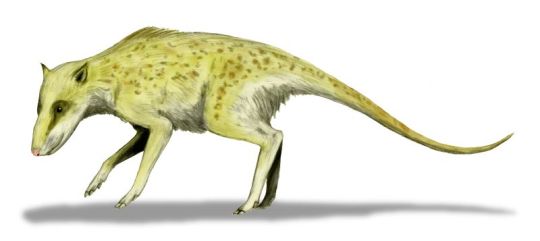
Ambulocetus natans, ritrovato in uno strato di sedimenti risalente a 48-47 milioni di anni fa, era sicuramente anfibio e lungo 3 metri. Aveva già zampe adattate al nuoto ed una coda che usava per nuotare muovendola verticalmente, come tutti cetacei moderni:
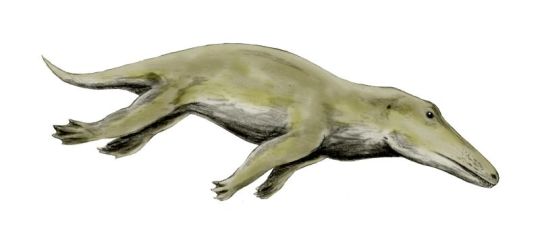
Sempre attorno ai 47 milioni di anni fa, vissero i rodontoceti, Rodhocetus kasrani e R. balochistanensis:
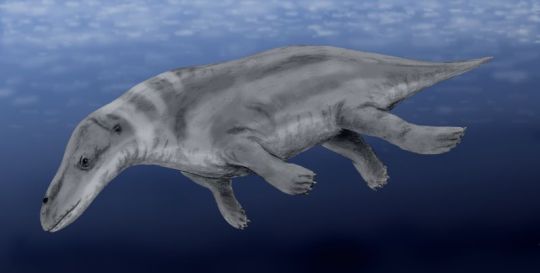
Anche loro erano anfibi, e avevano grandi zampe che potevano supportare il peso anche fuori dall'acqua. Alcune ricostruzioni gli attribuiscono già una pinna caudale, ma non è chiaro se ce l'avesse.
38 milioni di anni fa, invece, vissero i basilosauridi e durontidi, cetacei che ormai vivevano interamente in mare. I basilosauridi, quando furono scoperti, furono scambiati per rettili, da cui il nome traducibile con lucertola imperatore. Il Basilosaurus cetoides poteva essere lungo dai 15 ai 18 metri, ma nonostante le dimensioni simili a quelle di una balena la sua alimentazione era diversa: mangiava altri cetacei, pesci ossei, pesci cartilaginei (quindi anche squali), granchi e calamari:
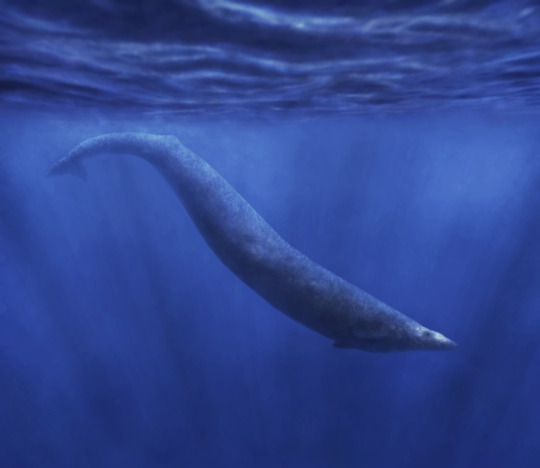
Il Dorudon atrox, lungo 5 metri, poteva essere una delle prede abituali del Basilosaurus, ma era anch'esso un predatore di pesci e molluschi:

Fra i 33 e i 14 milioni di anni fa visse lo Squalodon calvertensis. Il primo cetaceo con un organo per l'ecolocalizzazione, era lungo 3 metri e possedeva un corpo simile alle focene. Anche questo fu scambiato inizialmente per un rettile, in particolare per un genere simile a quello dei dinosauri iguanodonti.
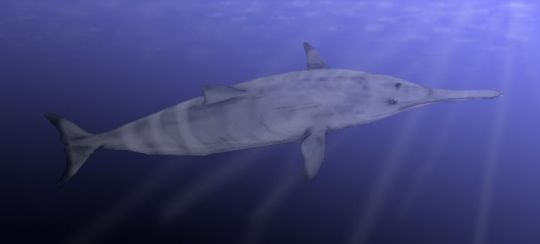
Oggi dividiamo i cetacei in Misticeti (con mascelle provviste di fanoni, cioè le balene) e gli Odontoceti (provvisti di denti, ad esempio i delfini).
Delle prime balene, vissute fra i 39 e i 29 milioni di anni fa, si hanno i pochi resti fossili del Llanocetus denticrenatus: frammenti di cranio e di una grande mandibola dai quali è stato possibile calcolare che il solo cranio fosse lungo 2 metri. Nonostante fosse privo di fanoni, gli studiosi ipotizzano che filtrasse il cibo in maniera analoga:

Un antenato degli odontoceti era invce il Kentriodon pernix, una specie di delfino primitivo vissuto circa 12 milioni di anni fa, lungo circa 2 metri, cacciatore di piccoli pesci:
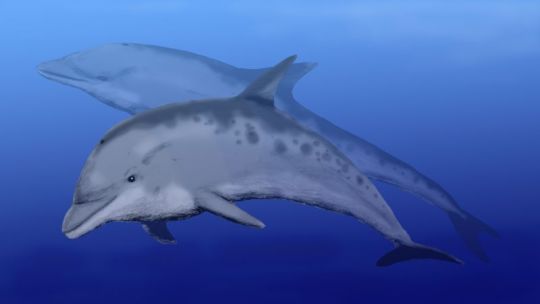
Sono stati ritrovati fossili di cetacei estinti ancora più simili a quelli attuali ma la trasformazione evidenziata da queste ricostruzioni paleoartistiche è chiara
Un particolare interessante che si nota riguardano le ricostruzioni è la scomparsa delle zampe posteriori, che però non scomparvero veramente: in realtà esistono ancora, invisibili, come loro vestigia all'interno del corpo, collegate alle ossa pelviche ma non alla colonna vertebrale. Hanno perso quindi completamente la loro funzione motoria se non per l'inserzione dei muscoli dei genitali. Altro particolare visibile nella sequenza delle illustrazioni è la migrazione delle narici che si sono trasformate in sfiatatoi.
Fonti: Wikipedia, TimeTree, Nobu Tamura paleoart, Encyclopaedia Britannica.
8 notes
·
View notes
Note
What's your favorite dinosaur?
honestly, I'm not sure. I was never really into dinosaurs enough to know their names or even pick a favorite.
Though the first thing that came to mind when I read this question were the pair of pics I've had on my phone for a while:
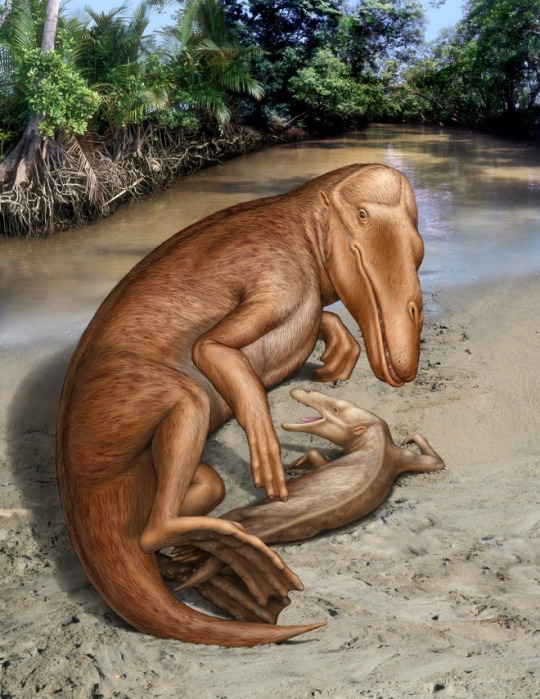
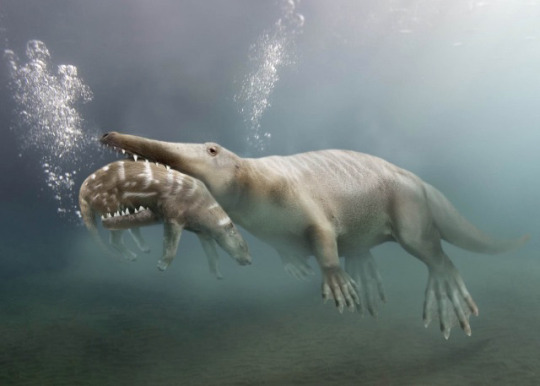
I don't know where I got these images, so I did a reverse image search.
The first image is of a pair of maiacetus innus, aka wolf dolphins. it's is thought to be the ancestor of modern dolphins, their evolutionary transition from land to marine life. This illustration is based on the first two fossils found, the larger one curled around a much smaller one. They are thought to be either a mother and child or a pregnant mother. An adult maiacetus was likely 8.5ft long and estimated to be between 620-860lbs in weight.
The second image is of an ambulocetus natans, aka the walking whale. Like the wolf dolphin, ambulocetus was the semiaquatic ancestor of contemporary whales. It averaged 11-12ft long, was probably 400lbs, and waddled rather than walked on land but was a savage swimmer.
Both lived approximately 47-48 million years ago.
These probably aren't dinosaurs in the colloquial sense but at least this answers your question.
10 notes
·
View notes
Note
Ik your probably asleep but if you can maybe make an Ambulocetus Natan mood board 😅 It’s a strange request , I know but it’s my kintype
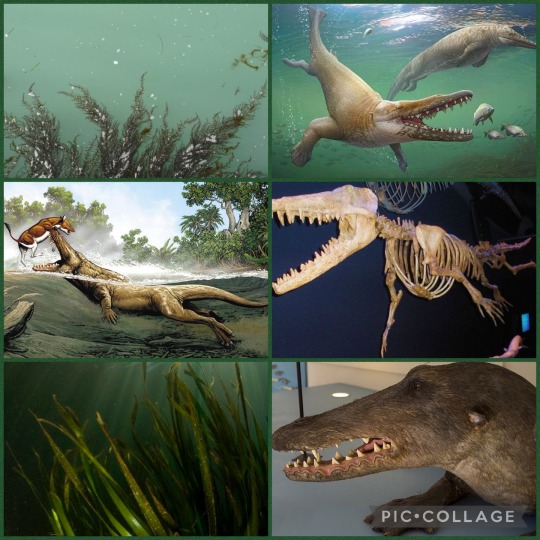
Oof this was difficult!
12 notes
·
View notes
Text
Wikipedia article of the day for July 3, 2021

The Wikipedia article of the day for July 3, 2021 is Ambulocetus.
Ambulocetus natans is a species of early amphibious archaeocete cetacean from the Kuldana Formation in Pakistan during the early Eocene, 48 or 47 million years ago. It is among the most completely known Eocene cetaceans, vital to the study of cetacean evolution and the transition from land to sea. Ambulocetus probably had a long, broad, and powerful snout, and eyes near the top of the head. It may have hunted like a crocodile, waiting near the water's surface and ambushing large mammals, using the jaws to clamp onto and drown or thrash prey. It may have swum like a river otter, alternating beats of the hind limbs while keeping the forelimbs tucked in for most of its propulsive power, simultaneously undulating the torso and tail. It had four functional limbs and may have walked much like a sea lion. It possibly had webbed feet and lacked a tail fluke. It lived in a hot, coastal swamp, probably in a river mouth.
3 notes
·
View notes
Text

Baikal when they were alive
#art#oc art#reference sheet#oc: baikal#furry#anthro#furry art#artists on tumblr#ambulocetus#ambulocetus natans#paleoart#pelagos#oc
1 note
·
View note
Text

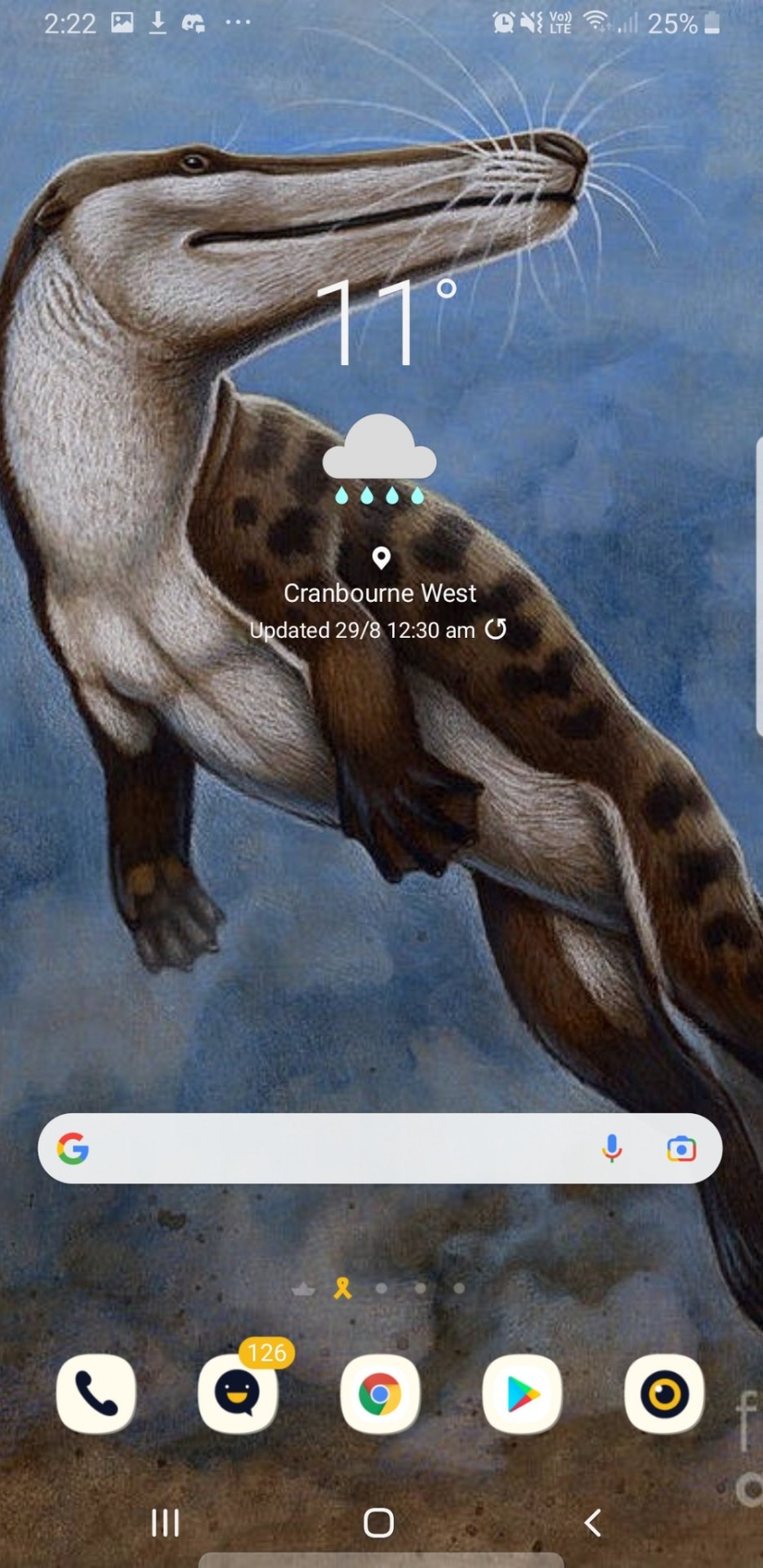
EDIT: Found the DiMA source :) https://tripticiousrobot.tumblr.com/post/144906243821/dima
It's an autism law to have special interests as lock screen and background
I can't seem to find the source for the DiMA drawing :c
But this is the source for the Ambulocetus painting (and my personal favourite rendition of the animal)
1 note
·
View note
Text
when your colleague disproves all your theories on ambulocetus natans and you have to move into a flat

[ID: a photo of young Harry from Mamma Mia 2 standing on the end of the pier in Greece, from the song ‘Why Did It Have To Be Me?’ in the film. He looks sad and a bright blue teardrop has been drawn on his cheek. To the left of him, over the sea, in red comic sans, there is text reading - Men are the toys in the game that you play, When you get tired, you throw them away, That’s only natural But why did it have to be me? \End ID]
6 notes
·
View notes
Photo

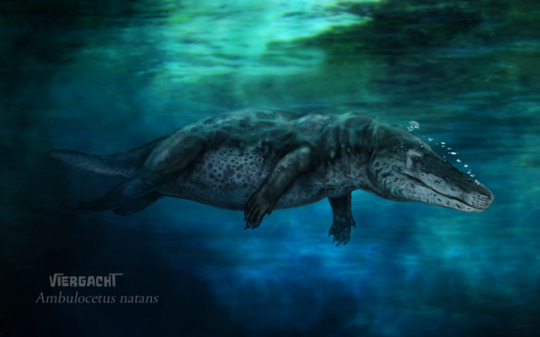
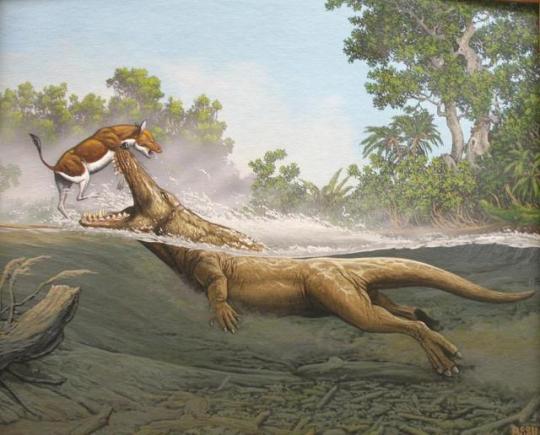

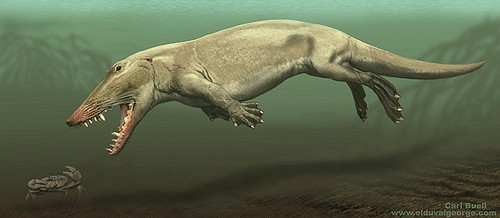



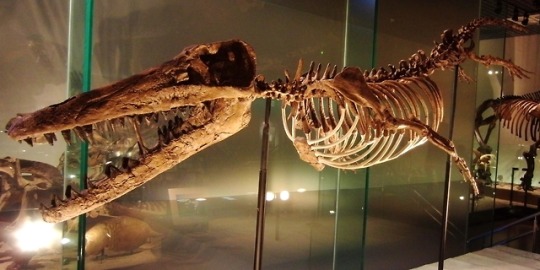
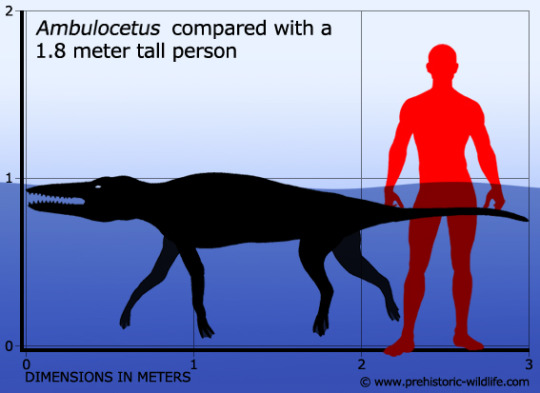
Ambulocetus (meaning "walking whale") is an early cetacean from Pakistan. It is named as such because it had short limbs and large feet used for swimming. Along with other members of Ambulocetidae, it is a transitional fossil that shows how whales evolved from land-living mammals. While its name stems from the historical hypothesis that it was capable of walking on land, more recent research suggests that it was fully aquatic like modern cetaceans. Ambulocetus was the size of a male sea lion. The body weight of Ambulocetus is generally estimated at 311–518 lbs, while Philip D. Gingerich estimated it at 1,590 lbs.
Ambulocetus was probably fully aquatic like modern cetaceans, with a similar thoracic morphology, and it probably swam by undulating its back vertically. Chemical analysis of its teeth shows that it could move between salt and fresh water. It also lacked external ears. Its skull had a long snout and eyes facing sideways, located high on the skull like in modern hippos.
Several features shared with other basal cetaceans indicate the close affinities of Ambulocetus with these animals; it had an adaptation in the nose that enabled it to swallow underwater, and its periotic bone's structure was like those of whales, enabling it to hear well underwater. In addition, its teeth are similar to those of other early cetaceans. The location of Ambulocetus’ nose opening (the blowhole of later whales) remains a mystery. Throughout whale evolution, the opening shifts from the tip of the snout back to the forehead. The position of the nose on Ambulocetus can only be inferred based on other early cetacean fossils, since the tip of the snout was not recovered.
Ambulocetus had a feeding morphology similar to that of crocodiles: a long snout, pointed teeth, and strong jaw adductor muscles. Like crocodilians, Ambulocetus probably killed its prey by holding it in its jaw and either drowning it or thrashing it with violent motions. Similar to larger crocodilians, adult Ambulocetus probably were ambush predators that fed on larger fish, aquatic tetrapods and possibly terrestrial animals near the water. In contrast to crocodilians, it may have chewed its prey but probably did minimal food processing with its teeth.
The short forelimbs of Ambulocetus had five fingers on each hand and its long hindlimbs had four toes on each foot. It had dense osteosclerotic limb bones, suggesting it was well-adapted for living in water but moved slowly, probably hunting as an ambush predator. Its pelvis was attached to its spine, like land mammals and unlike later whales. Its powerful tail, which lacked a tail fluke, was apparently used for locomotion, and it probably moved similar to a modern river otter. Ambulocetids used their large feet and hind limbs for propulsion; morphologically, the thigh and leg of Ambulocetus were shortened, but the feet stayed large; this resulted in a reduction in lever arm but a retention of a large propulsive surface, indicating that the hind limb functioned as an oar.
Ambulocetus was probably an ambush predator, hunting large and vulnerable prey much like a modern crocodile. Unlike crocodiles, all fossils of Ambulocetus have been found in sediments deposited in a nearshore marine environment. The eyes were high on the skull, suggesting a keen interest in prey above the water table.
A partial skeleton of Ambulocetus was found in 1992 by Thewissen working with a team from the Geological Survey of Pakistan in the Kala Chitta Hills of Punjab. Ambulocetus was recovered from the Early Eocene (47.8-41.3 Ma) Kuldana Formation. It is believed to be from the Lutetian age of the Paleogene period (48.6 to 40.4 million years ago). While it was known that cetaceans had ancestors that lived on land, this was the first time that remains of a whale were found that included limb bones strong enough to walk on land. The fossil was published in 1994 and named Ambulocetus natans.
Fewer than ten ambulocetid fossils have been found, all in shallow sea or coastal swamp environments. Ambulocetus is the only virtually complete skeleton known from the group. The most complete specimen of Ambulocetus includes the skull (without the snout), the lower jaw, the vertebral column (except for a number of tail vertebrae), ribs, forelimb from the elbow down, and most of the hind limb. It was found in rocks that were formed in a swampy, coastal environment. The position of the nose can only be inferred since the tip of the snout was not recovered. Both whales more basal on the phylogenetic tree (pakicetids) and higher ones (remingtonocetids) have a nose opening at the tip of the snout.
#ambulocetus#walking whale#early whale#evolution#prehistoric animals#animales prehistóricos#prehistoric mammals#prehistoric whales#fossils
175 notes
·
View notes